Classification of Joints
Composition of a bone.
Periosteum
The hard outer part of the bone.
Diaphysis
The shaft of the bone.
Epiphysis
The head of the bone.
Compact Bone
The harder tissue of the bone near the periosteum.
Cancellous Bone
The softer tissue of the bone near the centre.
The larger the haversian canals (blood vessels) in a bone, the less dense and more spongy it is.
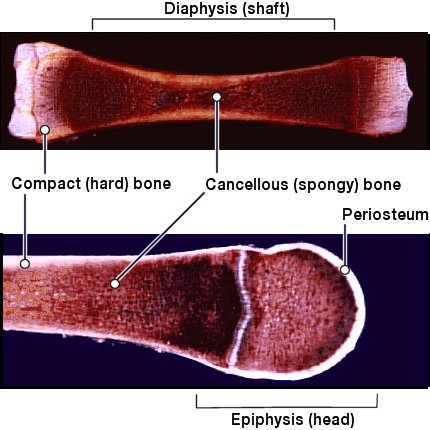
Fig.1 Bone composition.
Joints are classified in the following way:
- Fused (fixed), such as the cranium
- Cartilageinous (slightly moveable), such as the cranium
- Synovial (free)
Synovial Joints
Synovial joints all have synovial cavities, within which fluid is contained to aid movement.
They are categorised as: Gliding, Hinge, Pivot, Saddle and Ball & Socket.
Gliding: Exhibit slight movement in two planes, such as between the carpals.
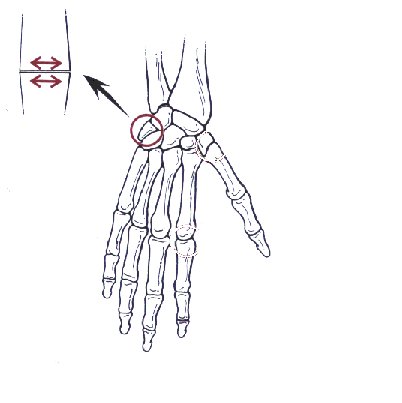
Fig.2 Gliding joint.
Hinge: Exhibit movement in one plane and are more stable, such as the elbow and the phalanges.
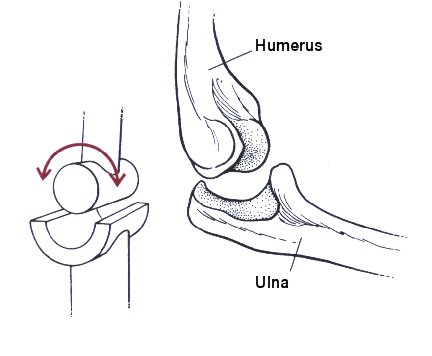
Fig.3 Hinge joint.
Pivot: Exhibit movement around one axis, such as the first two cervical vertebrae, and the radius.
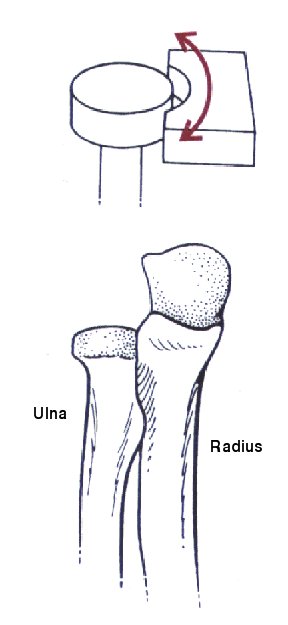
Fig.4 Pivot joint.
Saddle: Exhibit movement around two axes, such as the wrist.
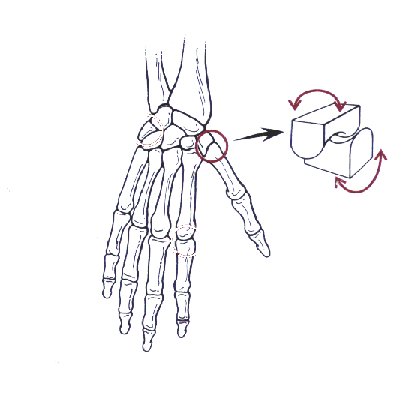
Fig.5 Saddle joint.
Ball and Socket: Exhibit movement in all planes and are therefore less stable, such as the hip and the shoulder.
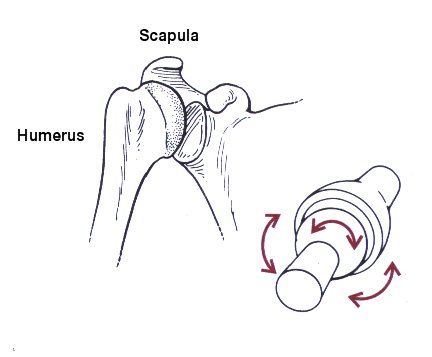
Fig.6 Ball and Socket joint.
